Generally speaking, telescopes for seeing planets requires a telescope with a long focal length, so you can fit your target in a smaller field of view and get a detailed close-up.
A longer focal length in a telescope usually means a higher focal ratio, which can be worked out by dividing the focal length by the aperture in mm.
Put simply, look for a high focal ratio if you want to see the planets of the Solar System. In practical astronomy, these are referred to as 'slow' telescopes.
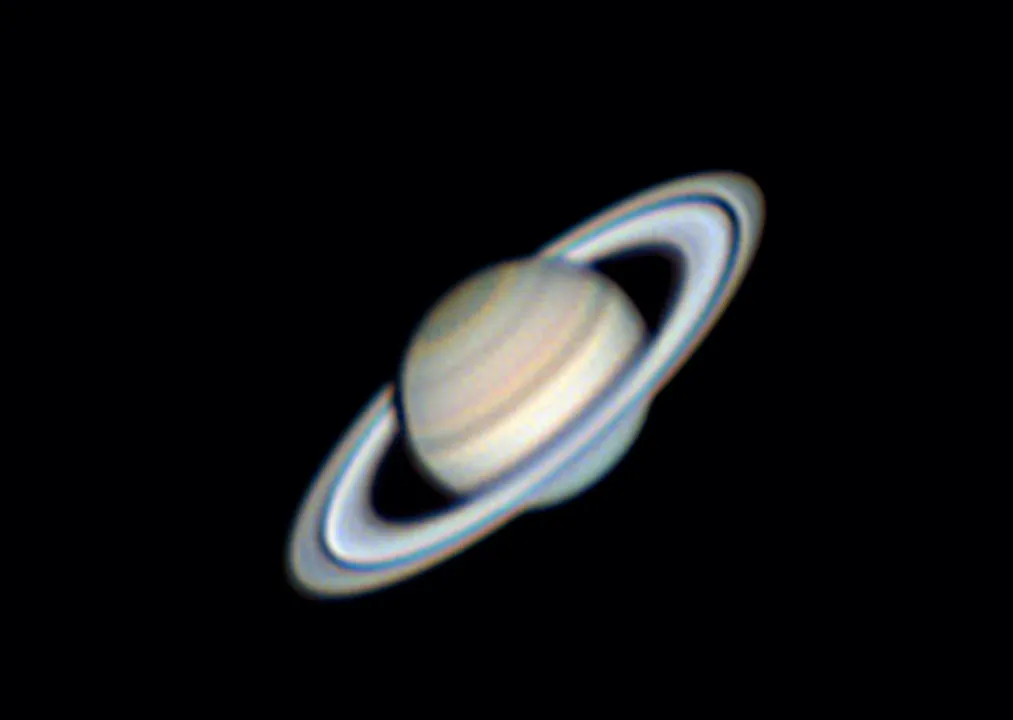
We've reviewed quite a few telescopes for seeing planets over the years t, although the accompanying price tags indicate these are not beginners' telescopes, but are instead for those who are series about practical astronomy and want to take it to the next level.
Below is our pick of some of the best scopes that will have you enjoying views of Mars, Jupiter and Saturn in no time.
If you're interested in imaging the planets, read our guide to the best telescopes for astrophotography.
14 best telescopes for seeing planets
Sky-Watcher SkyMax 180 Pro Maksutov
Buy now from Wex
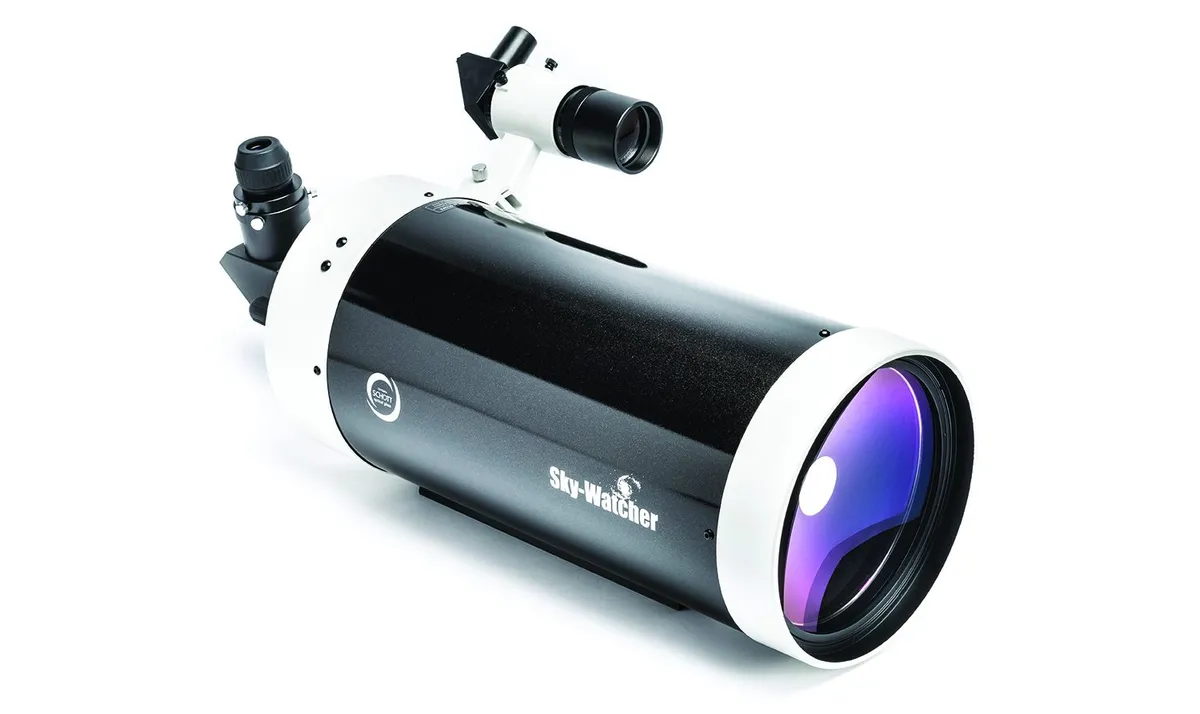
Pros
- At 7.8kg, relatively lightweight for its size.
- Also capable of deep-sky viewing and imaging
- Portable and compact
Cons
- Among the pricier telescopes on our list
- Comes with only 1 eyepiece
The SkyMax 180's long focal length is ideal for planetary and lunar viewing, but the telescope also gives good views of many deep-sky objects.
We used it to observe Saturn and found the Cassini Division and several moons on show.
The scope comes with a 28mm eyepiece, a star diagonal and Vixen-style mounting bar.
At just 7.8kg, it is also relatively lightweight for its size.
Key specs
- Optics Maksutov-Cassegrain
- Aperture 180mm (7.1 inches)
- Focal length 2,700mm (f/15)
- Weight: 7.8kgs
- Focuser Movable primary mirror via rear knob
- Extras 9x50 finderscope, 2-inch fit star diagonal, 2-inch to 1.25-inch adaptor, 2-inch, 28mm long eye relief eyepiece, Vixen-style mounting bar
Read our full review of the SkyMax 180 Pro
Celestron Astro Fi 5 Schmidt-Cassegrain Wi-Fi system

Pros
- Easy to set up and install
- Supplied eyepieces provide good range
- WiFi-controlled via smartphone
- Good for beginners
Cons
- 8 x AA batteries required
- Very slight distortion at edges of view
The Celestron Astro Fi 5 is a 5-inch Schmidt-Cassegrain on a single fork arm that also features integrated Wi-Fi.
A focal length of 1,250mm gives a focal ratio of f/10, making this a 'slow' system suited for observing the planets, as well as the Moon and bright deep-sky targets.
Indeed, we were rewarded with beautiful views of Jupiter's two main belts, polar hoods and all four of its Galilean moons.
The Wi-Fi/smartphone control of the Astro Fi 5 system is a nice touch and works well. Turn on the mount and it sets up a Wi-Fi spot you can connect to.Open up SkyPortal and you can use the app to explore a variety of targets.
Key specs
- Aperture 5-inch (127mm)
- Weight 7kg
Read our full Celestron Astro Fi 5 Schmidt-Cassegrain Wi-Fi review
Orion StarSeeker IV 150mm GoTo Mak-Cass Telescope
- Buy now from Orion Telescopes

Pros
- Straightforward assembly
- 2 x eyepieces and star diagonal supplied
- Crisp stars; detailed nebulosity
- Slewing via handset
Cons
- 8 x AA batteries required
- Slight wandering during tracking
- Very slight deterioration at edge of view
This is a straightforward scope to set up, and comes with encoders on the axis allow you to move the mount without losing alignment.
You can use the handset to slew to Jupiter, say, then manually move the mount to view Regulus in Leo, then press 'Jupiter' again and the mount will slew back to the planet.
We got a great view of the gas giant with its Galilean moons.
Swapping to a 10mm eyepiece we could see detail in the belts and the Great Red Spot.
Key specs
- Aperture 150mm (6 inches)
- FocalLength 1,800mm (f/12)
- Mount Computerised single fork arm altaz
- Weight 12kg
Read our full review of the Orion StarSeeker IV
Sky-Watcher Heritage 150P Virtuoso GTi Wi-Fi Dobsonian
- Buy now from eBay
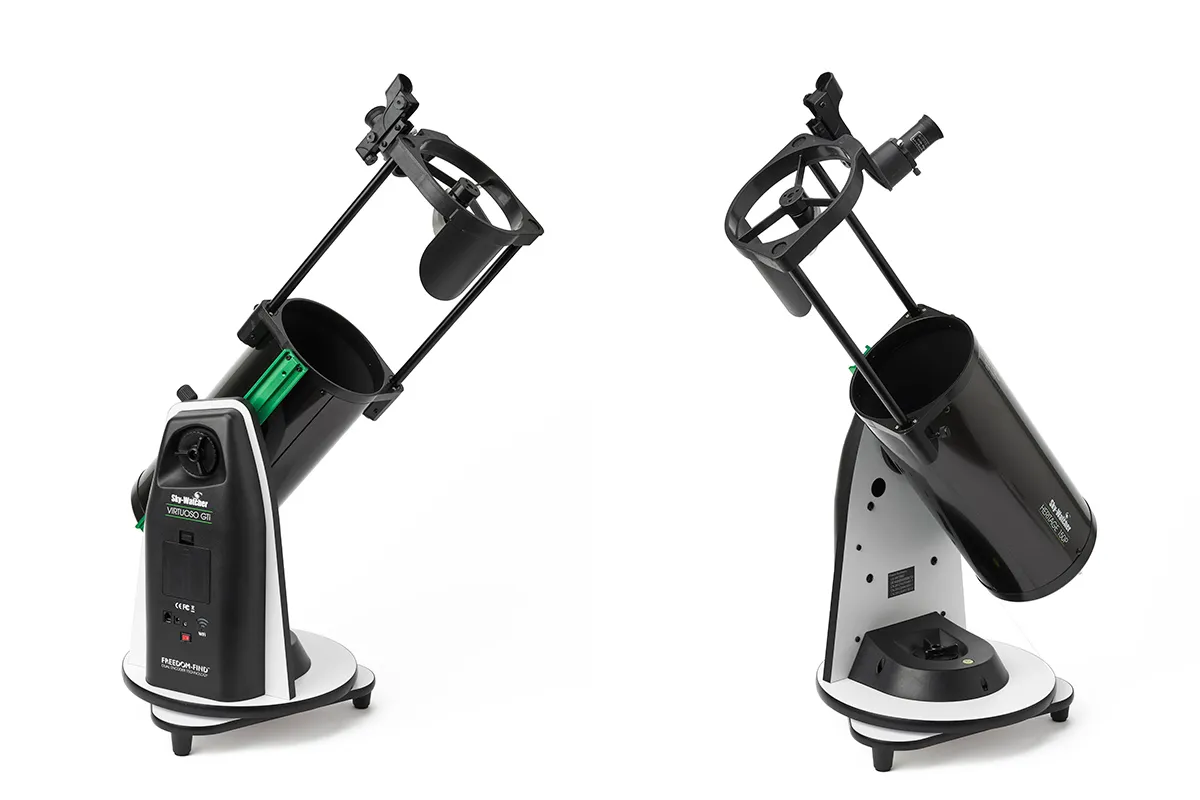
Pros
- Portable, grab-and-go
- Good for children and beginners
- Easy to store and transport
- Controlled via smartphone app
Cons
- 8 x AA batteries required
- No tripod: suitable flat surface required
The Sky-Watcher Heritage 150P Virtuoso GTi Wi-Fi Dobsonian is a Go-To version of the Sky-Watcher Heritage-150P FlexTube Dobsonian.
During our testing, we wanted to see how the telescope handled the planets on view during that period.
We found assembly of the telescope was very quick and all we had to do was loosen the dovetail bar clamp, slide the telescope upwards for removal of safety packaging, extend the FlexTube stays and slide the red dot finder onto its shoe.
The Sky-Watcher Heritage 150P Virtuoso GTi Wi-Fi Dobsonian's Go-To system has has built in Wi-Fi, so you can connect to your device using the SynScan App (for both iOS and Android).
The SynScan app contains various catalogues that you can access and, at the push of a button, your telescope will find its target.
This includes NGC, IC, Messier Catalogue, Caldwell Catalogue, Named Deep Sky Objects, Named Stars, Double Stars and Solar System objects (the planets, Sun, Moon and comets).
We used it to observe Jupiter and Mars, which were well-placed during the period of review, and loved seeing Mars's red disc and the bands and moons of Jupiter with pinprick clarity.
Key specs
- Design: Maksutov-Cassegrain altaz Go-To Wi-Fi tabletop telescope
- Optics: 127mm (5-inch) primary mirror
- Focal length: 1,500mm, f/11.8
- Mount: Wi-Fi, computerised, altaz and single-arm
- Ports: Power connector, camera port, hand-controller port, integrated Wi-Fi adaptor, on-off switch
- Tracking rates: Sidereal, lunar, and solar; alignment free
- Extras: Red-dot finder, 25mm and 10mm 1.25-inch-fit eyepieces, spirit level
- Weight: 10kg (total kit weight)
Read our full Skymax-127 Virtuoso GTi tabletop telescope review
Explore Scientific Carbon Fibre 127mm triplet apo refractor

Pros
- Relatively lightweight
- Highlights subtle details on planets and Moon
- Transportable
- Excellent optics for the price
Cons
- Less impressive photographically
- Slight slippage when camera attached
- Focuser and 25mm eyepiece 'average'
The ED127’s air-spaced triplet lens is great for getting subtle details out of the planets and the Moon.
The fact that the tube is made from carbon fibre helps to keep the weight down.
This is a great, medium-resolution planetary imaging instrument.
Key specs
- Aperture 127mm (5inches)
- Focal Length 952mm, f/7.5
- Eyepieces 25mm 2-inch eyepiece
- Finderscope 8x50 right-angled illuminated finder
- Weight 8.1kg without diagonal/eyepiece
Read our full review of the Explore Scientific 127mm
Sky-Watcher Evostar-90 AZ Pronto telescope and mount
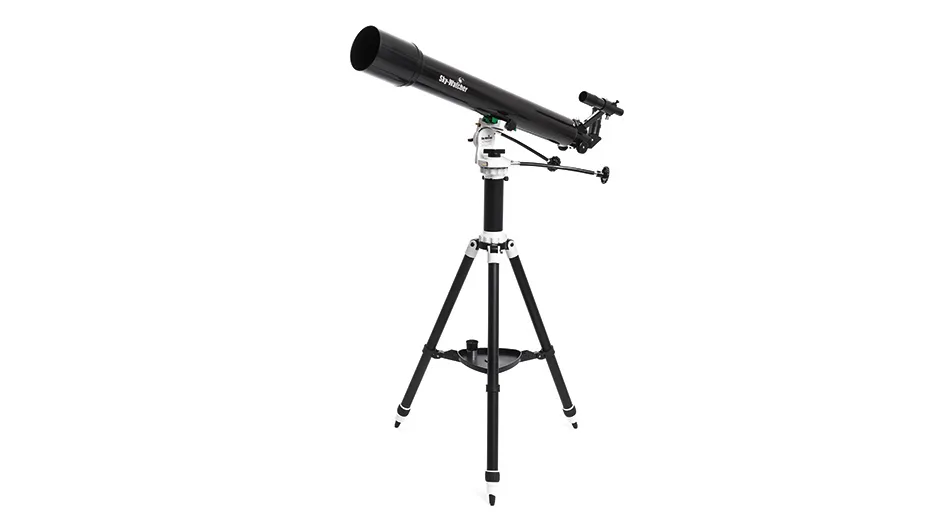
Pros
- Reliable optics
- Transportable
- Easy to assemble and use
Cons
- Slight colour fringing and distortion around edge of view
- Small finder: tricky to locate high-up targets
If you want to be able to get decent views of a range of targets - including the planets - but are a beginner on a budget, the Sky-Watcher Evostar-90 is a good option.
It consists of a refractor telescope and the AZ Pronto mount.
Its focal length is 900mm, giving it a focal ratio of f/10, meaning it will provide decent views of deep-sky targets and planets.
An erect-image diagonal is supplied, as are 2 eyepieces of 25mm and 10mm, giving magnifications of 36x and 90x with this scope.
This may not be the fanciest telescope on our list, but if you're after something with a more modest price that will still give you decent views of the planets, this is one to go for.
Key specs
- Aperture 3.5-inch
- FocalLength 900mm (f/10)
- Mount AZ Pronto
- Weight 6.25kg (tube 2.4kg, mount and tripod 3.85kg)
Read our full Sky-Watcher Evostar-90 AZ Pronto telescope mount review.
Meade Series 6000 115mm apo refractor
- Check availability at B H Photo Video

Pros
- Design reduces unwanted colour aberrations
- Easy to transport
- Good for astrophotography
Cons
- Slight elongation towards corners of the frame
This is a good all-round instrument that gives crisp, high-contrast views and is useful for visually observing both deep-sky and Solar System objects.
Its air-spaced triplet lens made from extra-low dispersion glass reduces unwanted colour aberrations, and the whole thing comes in a padded case for secure transport.
Key specs
- Optics FK61 fluro-crown glass triplet apo
- Aperture 115mm (4.5 inches)
- Focal length 805mm
- Focal ratio f/7
- Focuser Crayford-style 3-inch with dual speed 10:1 ratio
- Extras 2-inch dielectric diagonal, 25mm eyepiece, tube rings, carry case
- Weight 7.9kg
Read our full review of the Meade 6000
Istar 150mm F12 with Moonlite focuser

Pros
- Quality, substantially built
- Wonderful views and contrast
- Good for lunar, planetary, double star, deep-sky
Cons
- Assembly onto mount requires two people
- Substantial counterbalance required
Built from aerospace-grade magnesium and aluminium alloys, with many parts machined from solid block, the Istar exudes quality.
Views are bright and full of contrast, helped by excellent multi-coating on the lens surfaces and four knife-edge baffles.
We enjoyed a crisp view of Jupiter and its moons, and would recommend the Istar Perseus as an excellent upgrade for lunar and planetary observing.
Key specs
- Optics Achromatic doublet
- Aperture 150mm (6 inches)
- Focal length 1,800mm; f/12
- Focuser 2.5-inch, two-speed Crayford
- Length 190cm (74.8 inches) including dew shield and focuser
- Weight 17.6kg including focuser
Read our full review of the Istar 150mm
Celestron Advanced VX 9.25 Schmidt-Cassegrain system
- Buy now from Wex
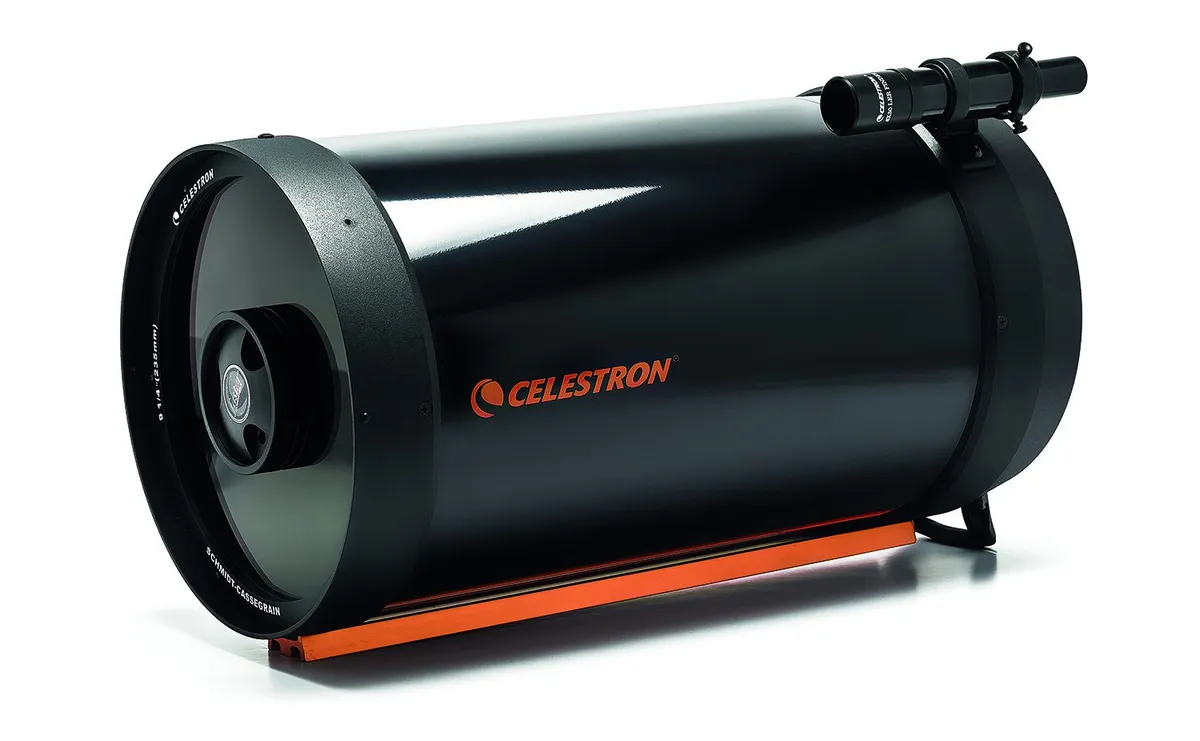
Pros
- Easy to transport and straightforward to assemble
- Polar alignment quick and easy
- Precise Go-To functionality
Cons
- Balancing feels a little imprecise
The C9.25’s 9.25-inch (235mm) aperture is generous, gathering a third more light than an 8-inch (200mm) reflector.
Its f/10 optics put it in the slow category and it is best suited for Solar System objects.
We used the scope to view a tiny Mars, and the Red Planet's colour, disc and phase were very evident.
We could even see one of its polar caps and evidence of surface markings.
Key specs
- Optics Schmidt-Cassegrain design
- Aperture 9.25-inch (235mm)
- Focal length 2,350mm (f/10)
- Mount Advanced VX equatorial, load capacity 13.5kg (30 lbs)
- Weight Equatorial head 7.71kg (17 lbs), tripod 8.16kg (18lbs), supplied counterweight 5.4kg (12 lbs)
Read our full review of the Celestron Advanced VX 9.25
Meade LX 200 8 inch telescope
- Buy now from Orion Telescopes
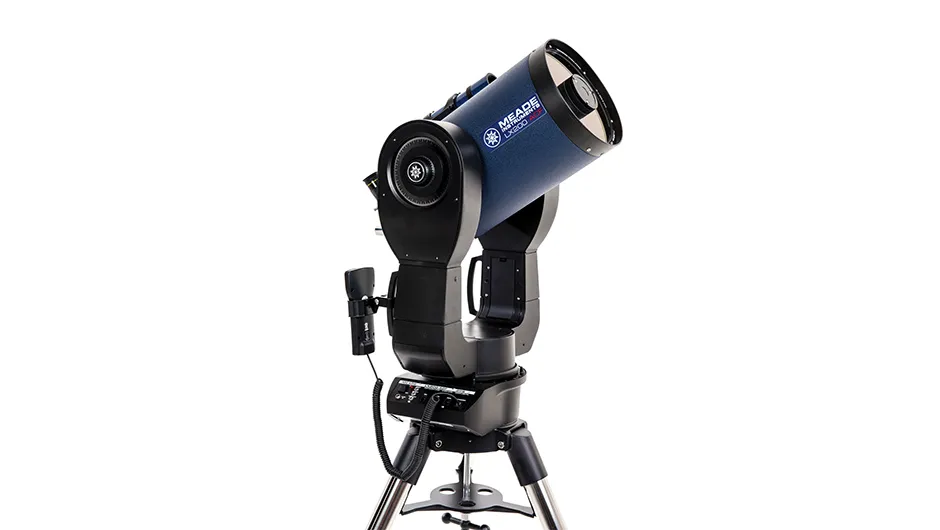
Pros
- Setup and alignment straightforward
- Great views, sharp stars across field
- Good for long-exposure astrophotography
Cons
- Weighty telescope - lifting requires muscle
- A few Go-To glitches were noted
- Slewing not particularly quiet
Accurate Go-To and crisp views make this a great starter scope for a serious beginner and, with an optional equatorial wedge, it is also useful for long-exposure astrophotography.
It is suitable for use with CCD, DSLR and high frame rate planetary cameras.
Despite its rather heavy weight, this is a relatively portable scope that would serve you well for planetary imaging.
Key specs
- Aperture 203mm (8 inches)
- FocalLength 2000mm, f/10
- Eyepieces 26mm Plössl
- Mount H
Read our full review of the Meade LX 200
Celestron CPC Deluxe 1100 EdgeHD Schmidt-Cassegrain
- Buy now from Wex
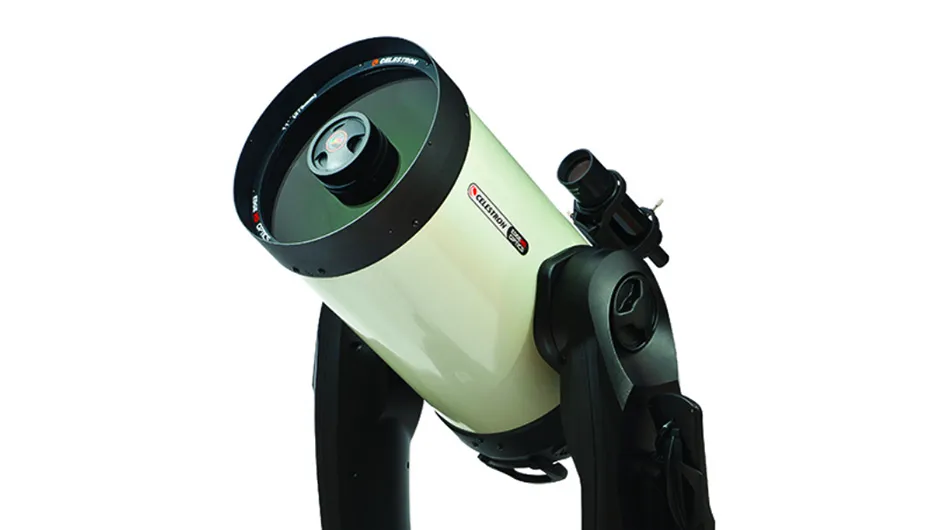
Pros
- Good for Solar System and deep-sky
- Accurate Go-To functionality
- Easy to set up
Cons
- Lifting may require two people
- Slight colour fringing on bright objects
- Altaz mount not suited for long-exposure imaging
The CPC Deluxe's 11 inches of aperture gathers plenty of light from nebulae and galaxies, while its focal length is long enough to get detailed views of bright Solar System objects with a modest set of eyepieces.
Our view of Jupiter using the supplied 23mm eyepiece revealed a sharp disc with a clear view of the two main belts, exquisitely intertwined with fine intricate detail.
Key specs
- Aperture 280mm (11 inches)
- Focal Length 2800mm (f/10)
- Eyepieces 23mm, 82º Axiom LX, 2-inch fit
- Finderscope 50mm with quick release bracket
- Mount Dual-arm fork; heavy duty stainless steel tripod
- Weight 30kg
Read our full review of the Celestron CPC Delux 1100
Sky-Watcher Quattro 150P f/4 astrograph

Pros
- Wide view great for large targets
- Clean, crisp images
- Good quality at a good price
Cons
- Test model exhibited collimation issues
The inclusion of the Sky-Watcher Quattro in this list might raise a few eyebrows, as Quattro telescopes are designed to be used as astrographs.
This means, they're intended to be paired with a camera and used fro astrophotography.
As a result, the 150P doesn’t come with eyepieces.
However (bear with us), it stands to reason that astrographs need good quality optics, and good optics also produce good visual observing.
We found this to be the case during our review period, which coincided with Jupiter approaching opposition.
We used a few of our own eyepieces to observe the gas giant, and our 4.5mm lens gave a pleasing 133x magnification.
The views of Jupiter we achieved with the 150P were remarkable: sharp, detailed and colourful.
This telescope may be an astro imaging specialist, but rest assured it delivers enjoyable visual use on planets as well as deep-sky objects.
Key specs
- Optics: Newtonian reflector, 0.86x aplanatic coma corrector
- Aperture: 150mm
- Focal length: 600mm, f/4; 515mm with coma corrector
- Focuser: 2-inch Linear Power Crayford-style focuser
- Extras: Dovetail bar, tube rings, 6mm x 30mm finder scope
- Weight: 5.7kg
Read our full Sky-Watcher Quattro 150P f/4 astrograph review
Celestron CGX-L EQ 1100 HD Schmidt-Cassegrain
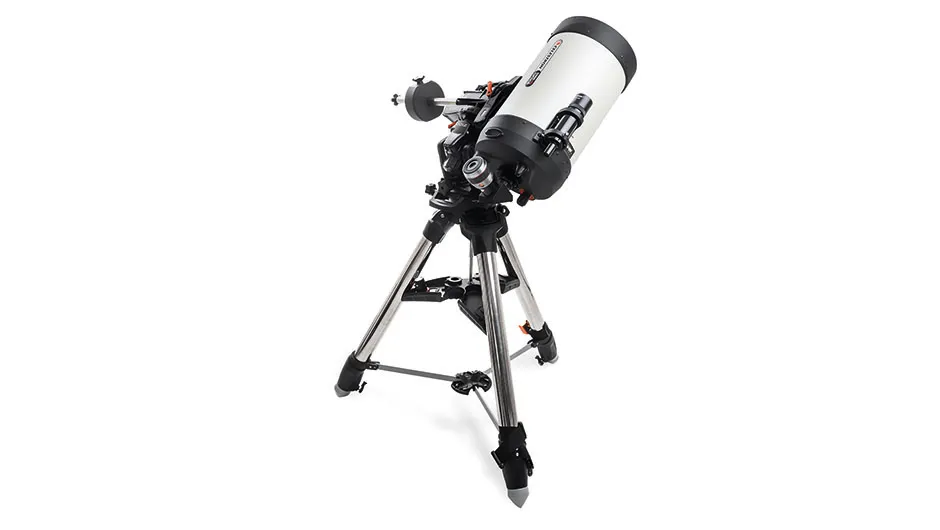
Pros
- Sharp flat field across large area
- Good for Solar System and deep-sky targets
- Wi-Fi controlled Go-To functionality
Cons
- Tracking occasionally slightly off
The CGX-L EQ 1100 EdgeHD represents a serious investment, but this instrument delivers a sharp, flat field across a large area that should be good for both Solar System and deep-sky targets.
The Moon and planets appear bright and well presented, the 11-inch aperture having sufficient resolving power to reveal intricate detail.
Key specs
- Aperture 11-inch
- Focal Length 2,800mm (f/10; f/7 with optional focal reducer; f/2 with third-party Fastar accessories)
- Eyepieces 23mm wide-angle 2-inch eyepiece
- Finderscope 9x50
- Weight Tube 13kg, tripod 21kg, mount head 24kg
Read our full review of the Celestron CGX-L EQ 1100
RVO Horizon 102 ED Doublet refractor
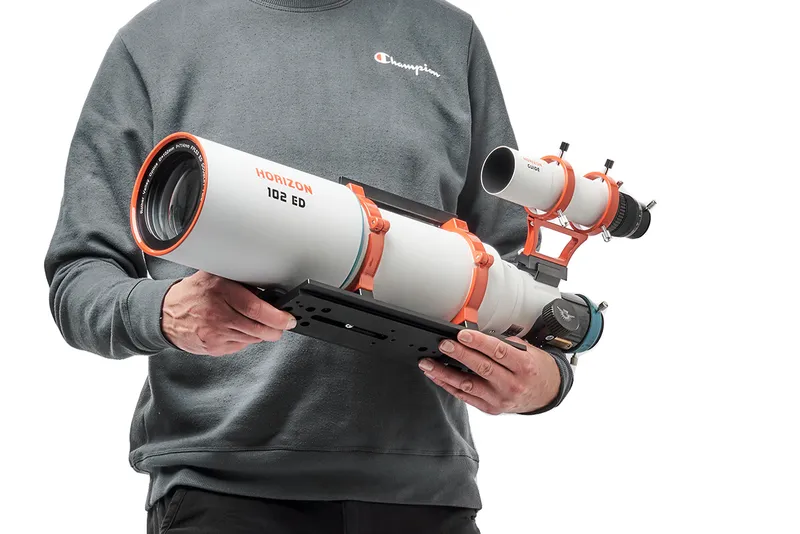
Pros
- Excellent build quality
- Round stars, minimal colour distortion
- Good for imaging
Cons
- Tube not suitable for lightweight mounts
The Horizon 102 ED Doublet is part of Rother Valley Optics' series of Horizon refractor telescopes.
For our review, we received the standard Horizon 102 ED Doublet package, which includes a carry case along with the telescope, tube rings and bar.
There was also a a suite of accessories including a finderscope, reducer/flattener and stand-alone field flattener.
We found the telescope to have excellent build quality, all parts machined with an attractive brushed metal finish.
The long focal length of 714mm lends the Horizon 102 ED Doublet very well to planetary imaging.
Key specs
- Optics: Air-spaced FPL-53 ED doublet
- Aperture: 102mm
- Focal length: 714mm, f/7
- Focuser: 2-inch dual-speed rack and pinion
- Extras: Losmandy mounting bar, Vixen-style top accessories bar, aluminium flight case
- Weight: 5.8kg
Read our full RVO Horizon 102 Ed Doublet review
How we test the best telescopes for seeing planets
Assembly
When testing our telescopes for seeing planets, the first thing we check is how easy the telescope is to assemble.
Does it come with instructions? Is it complicated to assemble? Does it contain lots of parts and no tools?
Or do we find assembly of the telescope intuitive and simple, with only a few individual pieces to account for, and detailed yet simple instructions that won't discourage the user.
If the telescope comes fully assembled and only needs accessories added, this is a big plus.
Build & design
We examine each of the telescopes for workmanship and construction materials, discerning the qualty of materials and whether it has been put together well.
We also admire good design, aesthetically speaking, that makes a particular telescope stand out from the competition (but this is not as important as functionality).
We check whether there are any apparent issues with the telescope's parts, and whether they're all in working order.
Ease of use
It's no good a telescope being well-suited to observing the planets and their moons if it is difficult to use.
We consider whether the telescope would be simple to use for a beginner, and whether a more seasoned astronomer would be frustrated with how it performs in the field.
Are there any changes - however slight - we would recommend that would make the telescope easier to use?
Is it easy to use with the supplied instructions? We look to see whether the telescope requires improvement, or whether it's a joy to use.

Features
When testing a telescope for observing the planets, we hope to find a very good range of useful features that enhance the system.
If there are only a limited number of features present, which are poor and not up to the job, the telescope will not score highly..
If the telescope does have useful features that make the system usable, could it do better? Perhaps it has a wide range of feature, but is lacking in some key features.
Ultimately we hope to find all of the supplied features are perfect for the job, with nothing else needed.
Optics
Optics, it shouldn't need to be said, are key.
Do the telecope's optics show numerous errors and out of focus stars? Expect a poor score, in that case.
We check whether there are multicoatings present, too. Perhaps only one surface of the objective is coated.
We'll check for aberrations. Perhaps there are some present, but the telescope is still just about useable.
If there are a small number of optical aberrations, but the central 50% provides a good view, the telescope will receive an average score in this category.
What we're looking for in the best telescopes for seeing planets is excellent optics with a flat field, no aberrations and fully multicoated where required.
For more equipment lists, read our guides to the best Wi-Fi and smartphone telescopes, the best tabletop telescopes and the best binoculars for astronomy.
